As an Amazon Associate I earn from qualifying purchases.
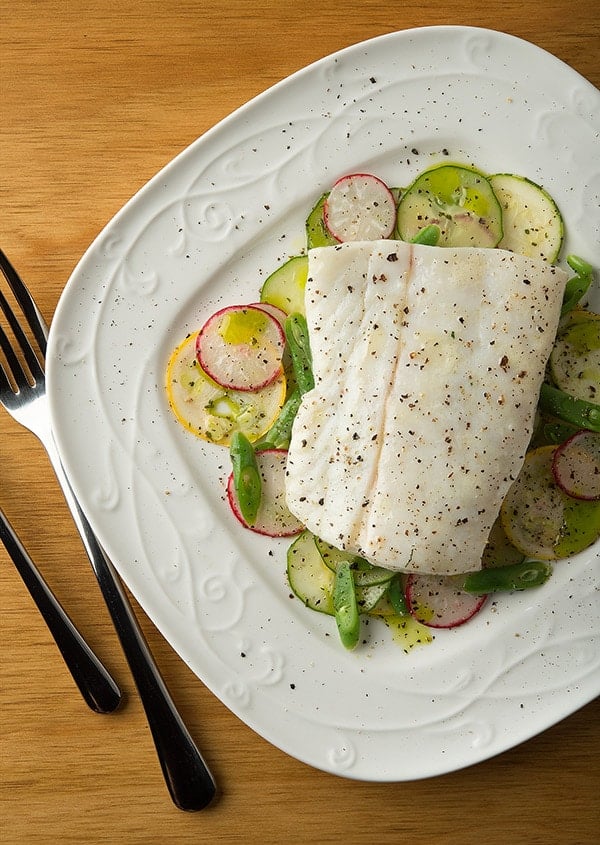
I have no idea why more people don’t poach their fish in butter or olive oil. Butter-poached fish is silky and luxurious, yet surprisingly light. It is ridiculously easy to pull off, and works with anything from halibut to perch to salmon, trout, snapper, you name it.
Actually, I do know why. It is the elephant in the room. Every time a chef or cooking personality extols the idea of gently cooking fish in a flavorful fat or oil, if you listen clearly you can hear most of the audience whisper: What on earth am I going to do with all that excess butter?
It is a fair question, and is the answer why butter poached fish is a lot less popular than fried fish — although, if you think about it, you are often using as much oil or butter in either case.
The answer is the same as it is with fryer oil: Save it and use it again. In both butter poaching and frying, you simply run the melted butter or oil through a paper towel to strain out any bits and into a container. You can leave the oil on the counter, but keep the butter in the fridge.
But won’t it be fishy? A little, but not unpleasantly so. It’ll be fine with another fish or seafood dish, but you wouldn’t want to put this butter on, say, chicken. For example, I poached this halibut in butter, and then used the butter again with some crab.
Why not use salted butter? Well, you could, but I find that in many cases using salted butter results in very salty fish. Professionally, I never use salted butter because I want to control the amount of salt. I recommend that you do, too.
Now that we have the elephant safely shuttled from the room, let me tell you again why you really want to add butter poaching to your cooking repertoire. It results in a wonderful, wonderful piece of fish. Now don’t get me wrong, I love fried fish probably more than most people. Hell, I even did an entire podcast about frying fish. But even I can get tired of it during fishing season, when I can eat fish or seafood many times a week.
So why not poach fish in broth or even salted water? Well, you certainly can, and it’s great for a fatty fish. I love poached salmon, especially with a horseradish cream. Here is a guide to “water” poaching.
But here’s the thing: When you poach in butter or olive oil or some other flavorful oil, you get just enough fat permeating the fish to make it silky. This is a huge deal with very lean, white fish — particularly freshwater fish. Cook a piece of walleye or bass or bluegill this way and you’ll be amazed. It can actually start to taste a little like lobster.
I normally just use butter, but you can flavor the butter with the herb or spice of your choice. Saffron or curry powder will turn the fish bright yellow, for example.
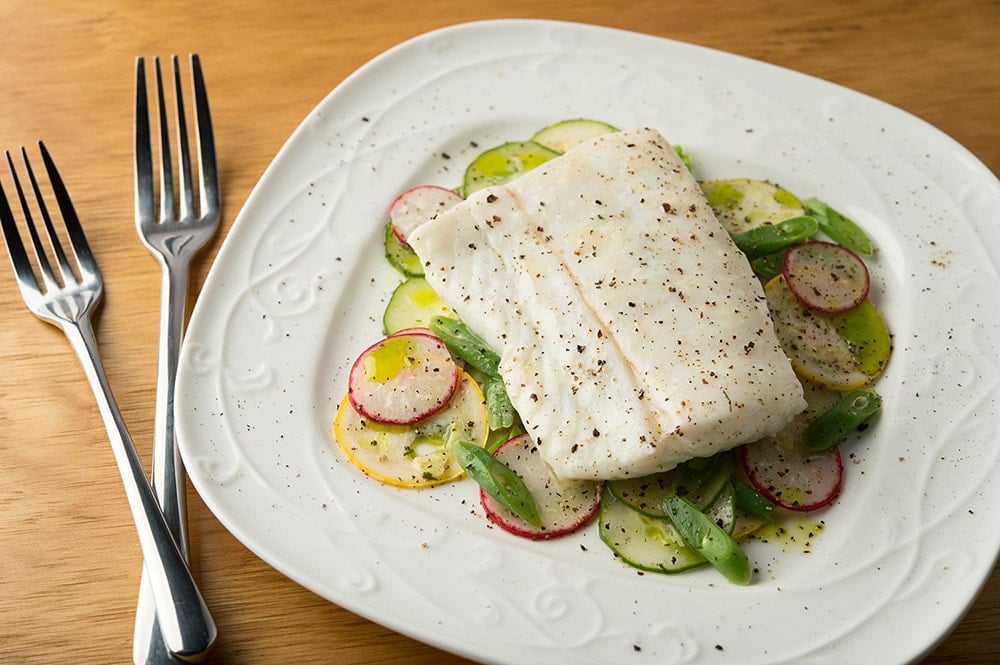
You gently cook the fish, too, so it will not seize up like fish tossed into boiling water, or over-fried. You get that pretty flake, and as the flakes begin to separate just a little, the butter seeps in. The texture is remarkable.
Finally, butter poaching is ridiculously easy. Easier than frying, believe it or not. Salt fish, melt butter, submerge fish in butter for 10 minutes or so, remove, eat. Try it. You’ll see.
Butter Poached Fish with Seasonal Salad
Ingredients
- 1 to 2 pounds of skinless boneless fish or shrimp
- Salt
- 1 yellow squash
- 1 green squash, like a zucchini
- 1 large cucumber
- 3 to 6 radishes
- 1/4 pound fresh green beans
- 1/4 cup white wine or rice vinegar
- 1 pound unsalted butter
- Olive oil (optional)
- Black pepper
Instructions
- Salt the fish well and set aside. Slice the squash, cucumber and radishes very thinly into rounds, ideally with a mandoline -- although a knife is fine. Slice the green beans thinly on the diagonal. Toss all the vegetables with a little salt and vinegar and set aside.
- Melt the butter in a pot large enough to hold at least 1 piece of fish, and ideally 2, at a time, but small enough so that the pieces of fish are submerged. You can use more butter if you want to, or you can top things off with olive oil. You want the butter to be between 150°F and 170°F. When the butter hits the right temperature, pat the pieces of fish dry with paper towels and submerge in the oil. If the fish sizzles at all, lower the heat. You want the fish to cook gently. Let the fish swim in the butter for about 10 minutes for every 1/2 inch of thickness. One way to do this is to put the submerged fish into a 325°F oven for 15 minutes.
- To finish the salad, add a little bit of the melted butter, or use olive oil, and toss well. Put some on everyone's plate. Gently lift out the pieces of fish and lay them on the salad. Grind lots of black pepper over everything. Serve with some good crusty bread.
Nutrition
Nutrition information is automatically calculated, so should only be used as an approximation.
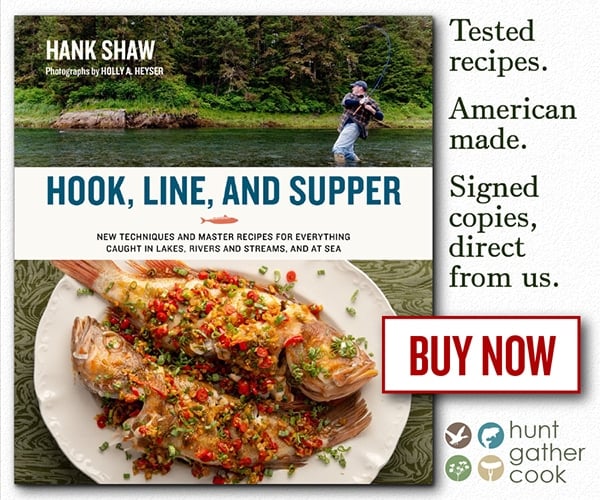
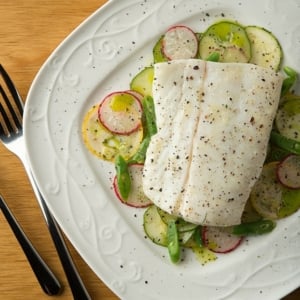
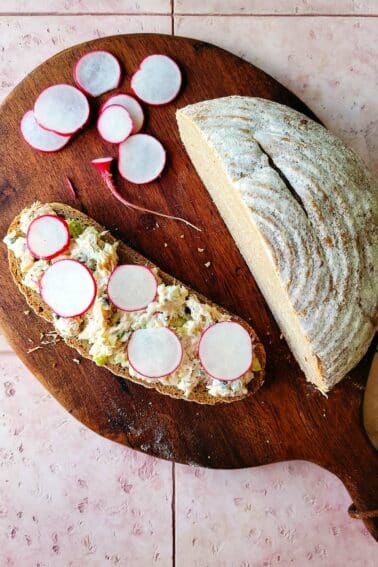
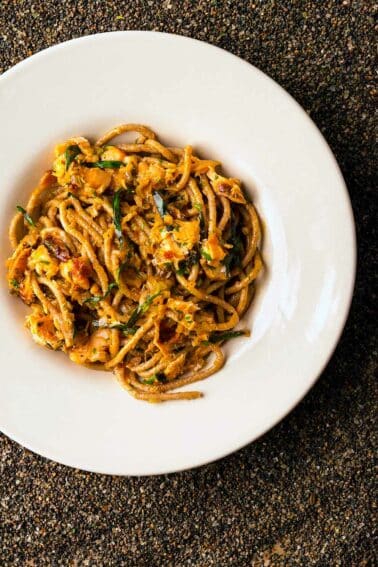
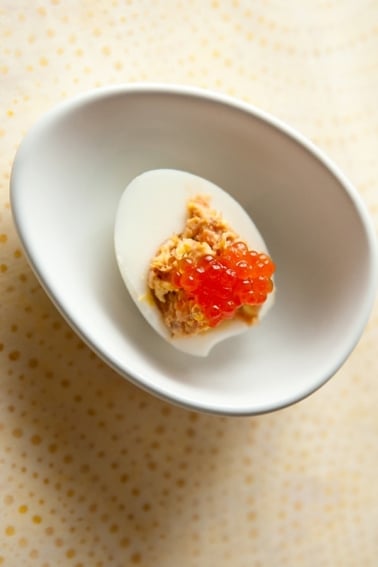
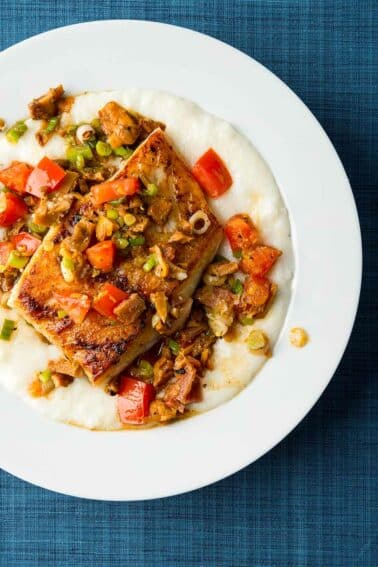
This was so simple and delicious, I just used cod that was on sale at the supermarket. I saved the rest of the butter for making steamed clams later.
this sounds interesting…always looking for new ideas.
76kcal…76,000 calories??
Am I seeing this correctly?
Susie: Nope. What we call calories in common parlance is actually kilo calories, scientifically speaking.
I made this and it came out nicely though I didn’t drain the salad part. It wasn’t too rich and I didn’t have to use a lot of seasoning. This was a very refreshing lunch for me as I’m always looking for different ways to cook fish.
what if the halibut has the skin on?
Jenna: Remove it.
Thanks! How long can the poaching butter last in the fridge? I know the date of the butter, but does it have less time once used to poach?
Jenna: If I am not going to use it within a week or so, I freeze it, where it should last a long time.
Thank you for explaining how this works. Now I don’t feel intimidated by this technique.
If you fillet a mess of fish (e.g. bluegill) late at night, how would you suggest storing the fish until the next afternoon or evening for a meal? In the fridge, obviously, but would you cover with a marinade or something?
Devin: I’d just lay them in a try and cover them with plastic.
Hey Hank, are the veggies all raw? I just worry that a cold bed will cool the fish too much, but I’m not a very experienced cook, so tell me if I’m wrong or if it doesn’t matter that it cool some. Thanks!
Lee: Yes, they are all raw, but at room temperature. Should be fine.
It does say 1/4 C white wine or rice vinegar. I was wondering the same although reading through other recipes, I’ve found that seasoning the pan with the wine with the herbs before melting the butter is a technique that interested me. I get the vinegar with the veggies but probably not the wine part 🙂 . Love every single recipe of yours so far Hank! Looking forward to ordering your cookbook now that you have signed copies back in! WooHoo!
i cannot see what to do with the wine?
Shelley: What wine? There is no wine in this recipe. Wine vinegar yes, but that goes with the vegetables.
There is wine in the list of ingredients but it’s nowhere in the recipe
Maria: Nope, there isn’t, but I could be clearer: That 1/4 cup of white wine vinegar, or rice vinegar, is for the salad.
Would sour vide with butter in the bag give similar results? It would take less butter
Scott: Yes, it does, but you get weird plastic bag marks on the fish then.
We were recently blessed with 6 pounds of fresh Canadian walleye fillets and I tried the butter poaching recipe with 1.5 lbs and it was Fabulous ! My husband said it is the best walleye he has ever had and I can make fish this way every week !!! ( our elk hunting son in law said the way I prepared your recipe for elk /venison roast low and slow was the best Elk he has ever tasted also ; )
Really love that butter poached fish. Have also put a vanilla bean in the poach for halibut and sturgeon. Also like to poach salmon in coconut milk, preserved lemon or lemongrass and kaffir lime leaves.
Have made Hank’s butter poached halibut a few times. so very easy and so worth the effort of making repeatedly. As if halibut is not good enough, this makes it even better. We joke and call it poor man’s lobster. Do yourself a favor and try this, It will not disappoint.
Hank thank you for the reply and clarification. My favorite family just wrapped up supper. I tried this with some flounder, redfish, and trout I hauled in last week on the Texas coast and all I can say is wow. This may have been the best fish I have ever eaten. Every family member is content with a full belly. I need to get some more fish. Thanks again Hank!
Hank I am confused. Am I cooking the fish only in the butter for 10 to 15 minutes or am I starting the fish in the butter and finishing the fish in the oven at 325 for 15 more minutes?
On another note my wife and I Love several of your venison recipes. Specifically Venison Steak w/Wild Rice Pilaf (Absolutly Awesome!)
Thanks
William: You are only cooking the fish in butter for 10 to 15 minutes. If it is a very thick piece of fish, and you want it cooked all the way through, then you can put it into the oven.
I tried some halibut with my sous vide cooker… The result: AWESOME!
Salmon, too. And I agree, flakier is better than at some lower temperatures.
Sounds amazing, would like to adapt this for sous vide. What final temp are you shooting for on the fish?
Mark: Whatever you’d like. I prefer flaky fish, myself, which is about 140 to 145 degrees.
Clarified butter?
Scott: Doesn’t have to be. Regular butter is fine.
This sounds awesome, Hank. Will give it a try. Thanks, fratello. 🙂
I use sous vide to “butter poach” fish or other seadood. It’s another way to significantly reduce how much fat you need since the protein is surrounded by the oil or butter in the bag.